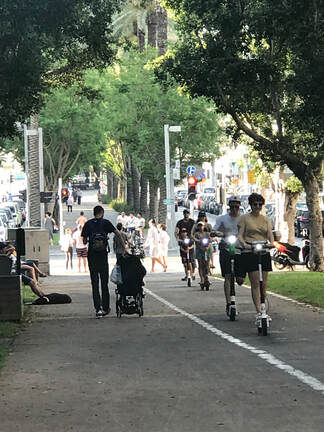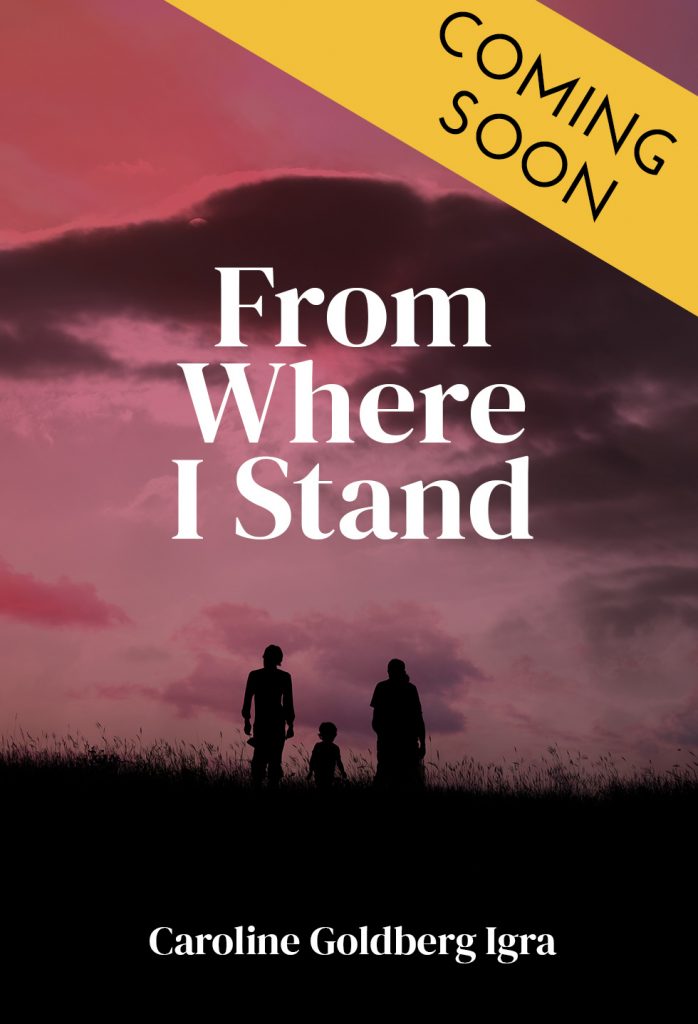One more beautiful night in Tel Aviv. My husband and I were spending that Shabbat, like many others, walking around, absorbing the vibe, trying to figure out whether it might be time to dump our Suburban life and move to the city. We were continually amazed by how different it was from the one we’d left almost thirty years earlier: dusty, shop windows more chaotic than appealing, a hodge-podge of joints offering mostly fast-food: hummus and shwarma, pizza, burgers, and fries. This Tel Aviv was positively buzzing with energy, each street bursting with enticing offerings: culinary, cultural and commercial.
Our itinerary that evening focused on the area near Rabin Square, a portion of the city chock-full of tree-lined boulevards: Chen, David HaMelech, Ben Gurion. Especially entranced by the fact that dogs were as integral to the local scenery as pockets of lush greenery and pop-up cafés, we had our Spaniel Georgia in tow. Every now and then we stopped mid-stroll along the midway and gazed up at the rows of low-slung apartment buildings, admiring the signs of decay: crumbling concrete, rusted banisters, smeary water marks, and the omnipresent traces of the city’s Bauhaus roots: ribbon windows, limited ornamentation, rounded corners and whitewash.
I remember smiling. How could I not? All of this, every bit of this city and what it had to offer, appealed to me in spades. But that particular night, the memory of my happiness stands out primarily because of how quickly it evaporated.
All it took was one step backward.
I’d wanted to get a better view. It wasn’t too much to ask. After all, we were standing on the sidewalk, an area reserved for pedestrians.
With absolutely no forewarning, there was a loud pop, a smear of dark colors, and something brushed my side strongly enough to cause me to lose my balance. That feeling of pleasure? The one I was enjoying? Gone! Instantly replaced by fear and incomprehension.
I whipped my head to one side, and then the other, trying to understand what had happened, from what threat I’d escaped, gauging whether I needed to prepare for another go-around. I pulled Georgia closer.
By the time I discerned the retreating back of a tall man on an electric scooter, he had already moved quite a distance beyond us. My initial surprise, fear and relief were replaced by anger.
“What the hell?”
“You stepped into his lane.” My husband’s voice cut into my shock.
“I did what?”
“His lane. Their lane. They get a lane.”
“What does that even mean?” I looked down at my feet, eager to affirm that I was in the right. Yes, I was still standing on the sidewalk. I looked over, into the street and checked. Yes, cars were passing. Things were as they’d always been, as they were meant to be: my space, their space. Clear as could be.
That’s when I saw it, the white line. I followed it backward, along the paved pedestrian walkway, to where we’d begun our stroll and then forward, to where we were headed. I took in the painted white bicycle clearly demarcating a cycling zone. Although I didn’t want to admit it, he was right. The sidewalk, that traditional safe haven for pedestrians, had been carefully divided to incorporate a lane designated for small-vehicular traffic.
Six months have passed since that first near-miss and I cannot begin to count the time I have spent negotiating precisely those sidewalks which I originally found so embracing, frequently forced to jump out of the way of one threatening contraption or another (more often than not an e-scooter), gauging whether it’s safe to cross the sidewalk, counting my blessings, and constantly tugging poor, confused Georgia back to safety. The facts speak for themselves: Sharing our so-called “safe space,” has effectively meant its erasure.
Don’t get me wrong. I understand the multiple charms of these electric vehicles (officially, PLEV: Personal Light Electric Vehicles): their contribution to lowering emissions and making the city greener, the ease with which they can help people get from one place to another, and, of course, the fun factor. I’m also certain that there are certain areas where they can be used properly and without endangering or threatening pedestrians, say beach communities or suburban areas (such as the one I call home); areas where they can be contained to proper bike paths. But their transformation of this magical city–within just a few months!– making it another version of the wild west, is anything but positive; their presence on the streets of Tel Aviv has surpassed that of being a “nuisance” and moved on to a “clear and present danger.” My first encounter, and others I’ve had in the interim, are nothing compared with the kind of carnage, and no, I do not use this word lightly, going on out there. Just take a look through YouTube!
I’ve been following the global debate over whether to allow the usage of these ever more popular e-scooters on the streets of congested cities. To date, they have already been permitted in several across American, albeit in far more restricted numbers, and a good number in Europe. Some estimate that there are already 25,000 on the streets of Tel Aviv! Yet, the growing spate of accidents, some fatal, associated with their use, has caused many cities to revoke their use or implement new rules intended to ensure a safer environment for riders and pedestrians alike.
In light of this situation, I was shocked to learn that there is a recent initiative in Manhattan, (where lawmakers have, to date, held an impressively tight line against permitting e-scooters), to permit them access to the already treacherous city streets. I can’t even begin to imagine the chaos they’ll create in the Big Apple when, after the honeymoon period, the serious accidents begin to pile up. Talk about opening Pandora’s box! My advice to residents and tourists alike? Beware of wolves in sheep’s clothing and hold on tight. You don’t want this ride to be your last one!


